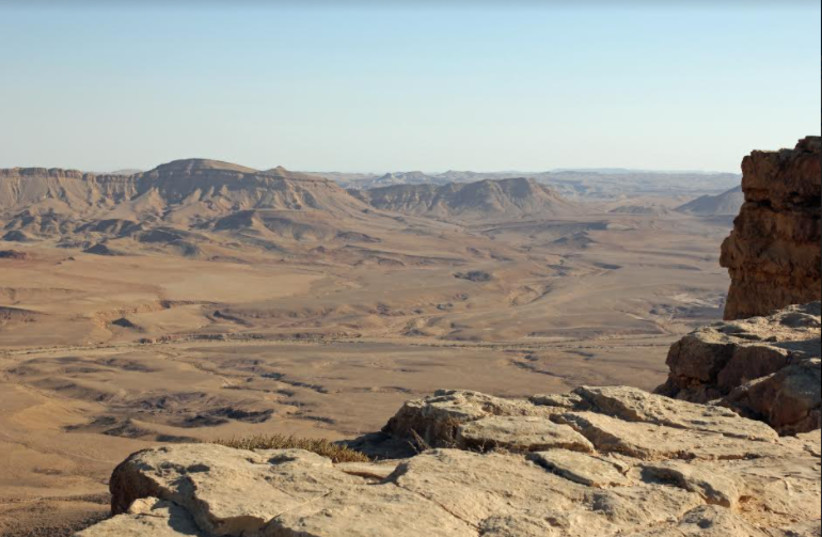The tombs in eastern Sudan were spaced out in a way that the researchers could not easily interpret, until they found a model for studying patterns of stars and galaxies.
By JERUSALEM POST STAFF JULY 9, 2021

Ramon: The Ramon Crater in Israel’s hot, dry Negev Desert.(photo credit: (EDUARD MARMET/ WIKIMEDIA COMMONS))
Thousands of Islamic tombs from the medieval era were found in Kassala, in eastern Sudan by an archeological team. The findings were published on Wednesday. As an introduction, the researchers explain that Sudan is a gold mine for archeologists as it is filled with countless funerary monumental manifestations of Nile Valley and its historical civilization.
Though we don’t know a lot about funerary practice in that area, we do know that the monuments found can be ascribed to different periods and cultures.
Qubbas is the name of funerary monuments related to medieval Islam whose origins and architectural style have been somewhat debated. In an interview with Live Science, Stefano Costanzo, a doctoral student in archaeology at the University of Naples L’Orientale in Italy and lead author of the journal article said that at first it would seem as if the tombs arrangement was just a result of the surrounding environment.
These galaxy-like clusters were then referred to as ‘parent’ and offspring tombs. The researchers noticed that the sub-cluster tombs revolved around the ‘parent’ tombs regardless of their chronology and shape and this allowed them to form their hypothesis about the role of the tombs. The researchers then started to research the groups that were inhabiting the area since the late 1st millennium BCE and found that the clusters most likely were related to the Beja people and could possibly be tribal or family cemeteries.
The study found that the parent tombs were placed in environmentally opportunistic areas and that the qubbas will more likely be spread “along foothills flat area with higher availability of raw material.”Further research is needed to determine the exact locations of the parent tombs within the formations and who were the people buried in them.
source Thousands of medieval Islamic tombs found in galactic pattern – The Jerusalem Post (jpost.com)
Categories: Africa, Islamic history, North Africa, Sudan
